Day #200 after Helene: a trail of dogwood petals through the Narrows
April 14, 2025
“It's the land. It is always the land… The ground beneath our feet. When we are long gone, when those we've lost are only a dusty memory in a book somewhere, an archived list of Helene's spoils, this land will remain… Maybe when we think we choose a place it's really that the place chooses us. Maybe we're a lot smaller than we think we are. Maybe when we understand that we truly become part of it. If it’s true what they say, if we are 60% water, we must also be 40% dirt.” (from Day #26, 10-22-24)
In days gone by, 200 of them to be exact, there was what you might call a defining moment. It’s been defining us ever since. 200 days after Helene, we’re still figuring out what it means. What everything means. What anything means.
On September 27, 2024, Hurricane Helene came to Appalachia. According to the National Oceanic and Atmospheric Administration (NOAA), she was the deadliest hurricane in the contiguous U.S. since Katrina hit New Orleans in 2005. Helene caused 249 verified deaths, including 107 here in North Carolina. In case you’re wondering, “verified” mean they found and identified the body. There are 26 here still missing.1 Flash flooding, river flooding, and landslides were directly responsible for most of these deaths.
Here in western North Carolina, Helene produced winds of up to 92 miles per hour and 30 inches of rain. Helene dropped twice as much rain on Appalachia as she did in Florida.2
What often goes unmentioned is that our ground here was already soaked good and proper before Helene came calling. It started raining on September 25th, when a slow moving weather front stalled across our mountains. Over the next two days, the two days leading up to Helene, this front would drop 6-10 inches of rain.3
Besides death, which is sort of the ultimate damage, NOAA’s official report lists other damages caused by this deadly storm, including:
63 stream and river gauges exceeded their record flood levels causing catastrophic flooding, such as the French Broad River at a height of 24.8 ft
More than 2,000 landslides
More than 125,000 housing units across western North Carolina were damaged or destroyed
822,000 acres of forest were destroyed, and millions of trees were lost
Extensive damage to Asheville’s water treatment infrastructure: clean water was not restored to the city until November 18th, 53 days after Helene
Hundreds of bridges and roads were damaged or destroyed, leaving people in remote areas completely cut off, in some cases for months
Helene didn’t know where the state lines were, so she also wreaked havoc in our neighboring states of Tennessee, South Carolina, and Georgia. In Erwin, Tennessee, the flooding from the Nolichucky River caused the drowning death of at least nine people. Four people died from falling trees down in Greenville County, South Carolina, with additional deaths in neighboring counties.
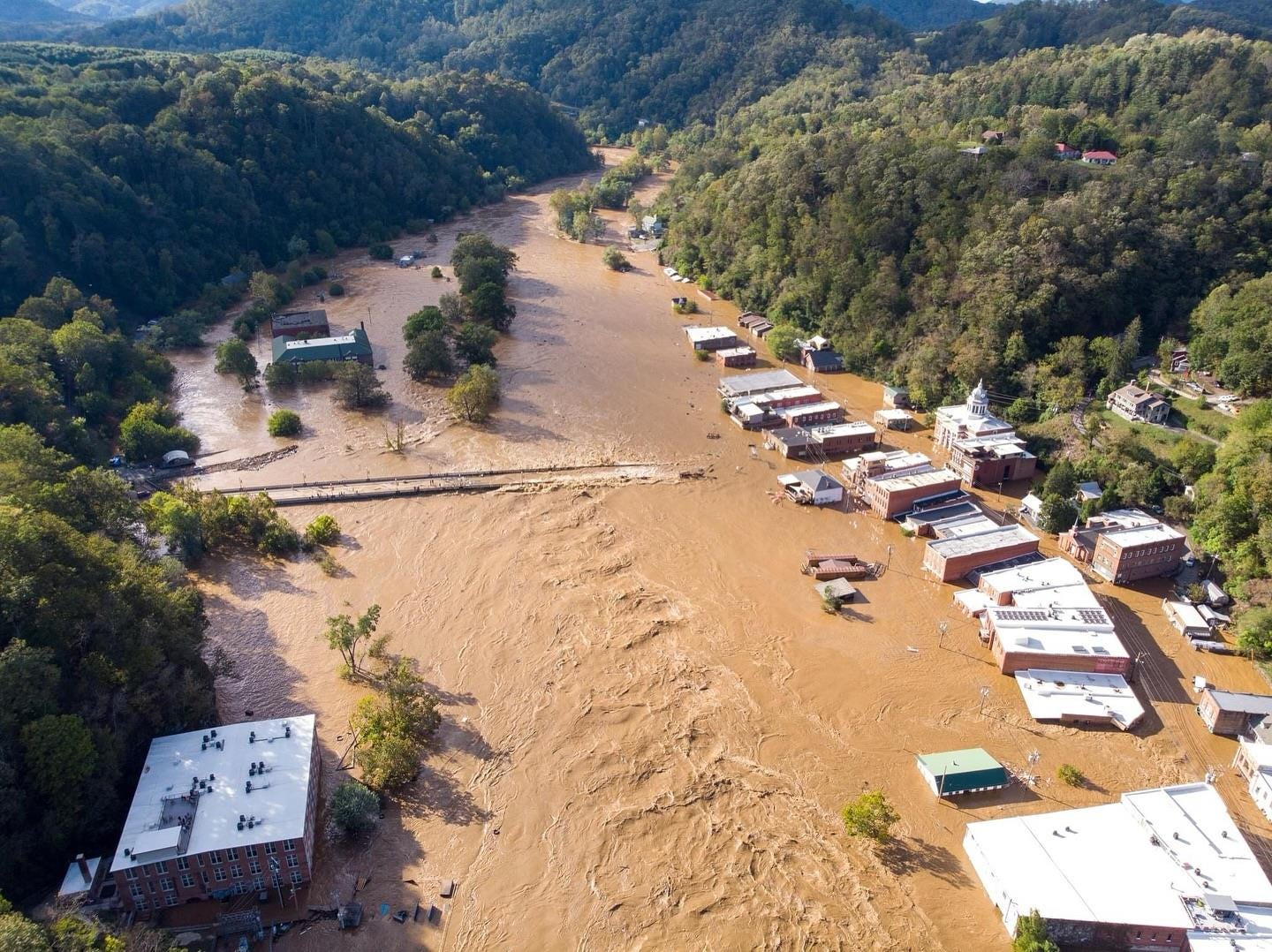
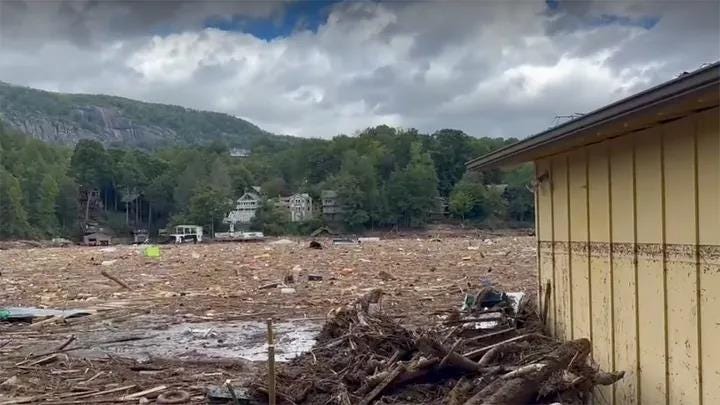
Helene has been retired now. The World Meteorological Organization announced that the name Helene (along with Beryl and Milton) has been retired from the list of names for Atlantic hurricanes. Hurricanes earn their retirement by being deadly. Yet Helene is like a retiree who won’t pack up her desk and go away.
She’s still here.
“Tell me your story,” I said to water and stone, as I walked along the banks of the Green River a few days ago, trying to make sense of what I was looking at.
My body remembers where things were before. Before September 27th. My muscles and sinew and even my eyes hold the memory of places where the river turned or ambled or rushed or split herself and came back together around outcroppings of rock and persistent trees. An embrace of water. My body remembers it all. I can feel it with my eyes closed the same way I can feel the shock of cold water or the warmth of sunlight on my skin.
It's my brain that’s confused, as I try to understand what is in the context of what was.
I don’t know why, but when I try to understand a river, like really comprehend the wholeness of a river, my mind traced them upstream not down. “Where do you come from?” I always want to know. “Who is your family? Your relatives?”
Like the rest of Appalachia’s rivers, the Green River is birthed by mountains. Every day, mountain springs at our highest peaks feed their rivers like they are hungry children who always need a little more and a little more. I remember my baby daughter pointing to her plate and saying, “I need more dis.”
The Green River gets fed by the Little River and the Hungry River (see what I mean- they’re all little and hungry) which are fed by creeks which are fed by springs on the eastern slope of the DuPont Forest in the Blue Ridge Mountains.
From there, she winds her way down through the Blue Ridge Escarpment and eventually joins up with the Broad River. I came to know her in the Green River Gorge.
There are three sections of our Green River.
The Upper Green is approximately 3 and half miles long and has an average gradient of 49 feet per mile. With only two significant rapids, it’s a moderately challenging kayak trip, and one way to get into the Narrows. Another way to get into the Narrows is to get thrown out of a plane.
The Narrows are not for the faint of heart. Or anyone with any sense. This three mile stretch of white water between the upper Green and the lower has a downward gradient of over 100 feet per mile. They’re home to several class V rapids with names like “"Go Left and Die’ and “Gorilla." The Narrows have taken some lives even before Helene. They’re surely something to see though.
The Narrows open up into the Lower Green, home of the Green River Cove. It’s a place where you can take your children tubing and everyone’s likely to go home alive. A gentle place. Right up until last September 27th.
Why does any of this matter?
Because our rivers here are not strangers. They know our names and we drink with their relatives.
Because who we are after makes no sense if you don’t know who we were before. Before Helene.
Last Wednesday (April 9, 2025) we visited the Green River Cove and walked along the river. It’s been nearly seven months since Helene changed this beloved ground forever.
There’s a sign that says, “primitive road,” and they mean it. In some places the road appears untouched (as long as you don’t look to the left or the right) and in other places it’s more like a cow path to nowhere.
In some places the river is not where she used to be. Rocks and boulders as big as a car or bigger aren’t in the same place. While much of the debris has been cleared, what’s been left behind is a whole lot of nothing. Bare river sand where once there was foliage. In good times, the area surrounding the river is all deciduous forest right up to the riverbanks and is known for having some of the "highest floral and faunal biodiversity in the eastern United States."4 The Green River didn’t get her name from a barren landscape, but a barren landscape is where she lives now. At least for the time being.
There are places where once upon a time there were houses and river businesses. There’re a few slabs left, a few piles of debris. Random junk that hasn’t yet been picked up. A mangled patio chair. Someone’s sun hat.
How is it possible that anyone survived this? I swear I do not know. Some folks didn’t survive it. Those of us still here are like rocks in a riverbed wondering how we managed to stay put.
Perhaps some rocks and humans are more stubborn than others. It is probably way more random than that. Sheer dumb luck.
Survivors are no more or less worthy than the fallen.
If baptism by water wasn’t enough to redeem mountain souls, six months later there was baptism by fire.
After two months or more of extreme cold, the month of March was unseasonably dry. We are living in the days of too much and too little. March was the month of too little moisture and too much dry wind.
Along with eastern Tennessee, western North Carolina is part of the Appalachian temperate rainforest. It is one of the most biodiverse regions in the world. Around here, these hills and hollers hand out diversity and inclusion like mountain party favors. There are over 60 mammalian species and more than 200 avian species native to this land. We have more than 4,000 native plants and the diversity of our trees paints the mountains blue.
Literally paints our mountains blue. To protect themselves from the heat, the trees here release a volatile organic compound called isoprene into the atmosphere. It’s like a mist or a vapor. This isoprene scatters wave lengths of light. The blue ones, the blue light waves, are the ones we can see. It’s what makes the Blue Ridge blue.
We normally get between 50 and 80 inches of rain per year here. Even so, we still have more sunny days than cloudy ones. This balance of rain and sun makes this land lush with life. From spring well into fall, you can watch things grow.
What happens when you marry drought and high wind with 822,000 acres of dead and dying trees?
Fire.
The Black Cove fire started in the Green River Gorge on March 19, 2025, when high winds knocked down a tree which knocked down a power line which made a spark. In a graveyard of trees and dry brush, a single spark is all that’s needed to set an unholy blaze.
On that same day, the Deep Woods Fire also started in the Gorge and in the neighboring Holbert Cove community. Then on March 20th, the Fish Hook fire started from another downed power line in the area around Lake Adger. Lake Adger, located near Mill Spring, is fed by the Green River.
Collectively, these fires burned for more than 12 days and spread to 7,670 acres before they were through. They became known as the Black Cove Complex.
Meanwhile, additional fires broke out in other western North Carolina Counties while the Table Rock fire started on March 22nd in South Carolina and then crept across the NC state line into Transylvania County. The Table Rock fire alone burned 13,845 acres and was started by straight-up human stupidity. That fire was kept company by the Persimmon Ridge Fire, which burned an additional 2,128 acres. The South Carolina fires became known as the Table Rock Complex.
Complex is a good word for Appalachian forest fires after Helene and will likely remain an apt descriptor for decades.
Our landscape around these parts was plenty complex before Helene came calling. We’ve always had dense woods, steep slopes, and narrow roads and bridges. That’s nothing new.
Now we have roads that have been washed away and air where there once were bridges. In their place we have piles of debris—some of it on the forest floor and some of it blocking what roads we have left. Rivers that used to act as fire breaks aren’t where they used to be.
Side note: The Black Cove Fire did something no self-respecting fire should ever do. It jumped the Green River not once but twice. Even our fires have lost their minds.
John Trudell once said, “When you are losing your mind, only lose those parts that need losing.” We’re still figuring out what parts to keep and what parts to discard around here.
“The North Carolina Forest Service has never fought fire in storm damaged, hurricane blow down in the southern Appalachians on a 60% slope,” Bo Dossett, a ranger for the state’s forest service, said. “We've never done that. I don't really know that anybody's ever done that.”5
Statistically speaking, Helene was a once in a thousand years storm.6 No one living has ever seen anything like it.
“We're really only at the very beginning of seeing how that Helene debris is going to affect wildfires for the next decade, maybe multiple decades,” said Dossett. “We're kind of flying blind. We've never seen something like this before.”
No one has.
So here we are, 200 days later, still flying by the seat of our pants.
Sometimes we have to step back. Give ourselves grace and give ourselves time.
On April 10th, the Green River Tubing Company, located in the Cove, issued a statement on their Facebook page saying, “It is with a heavy heart and much deliberation that we have made the difficult decision not to open for the 2025 season. The impact of Helene and the wildfires has been severe, resulting in significant losses, including buildings, property, and a home… Despite our initial hopes, we have been unable to complete the necessary work in time.”
It's hard to look at the condition of the Green River Cove after more than seven months and imagine that another year will be enough. But maybe…
I’m telling you about all this because we’re on a first name basis with our forests and trees around here as well. We know their kin. We are their kin.
This story, this story of Appalachia in the days since Helene, is about as personal as it gets.
If we could tell you one story, we could tell you a thousand more.
I remember in the early days after Helene, maybe about six weeks out when the forests were as grey as November skies, I wondered if when spring returned to Appalachia, when new leaves unfurl on the trees of the Blue Ridge, would the mountains be as blue. Would new spring leaves even show up? It was hard to imagine it back then, surrounded as we were with the fresh wounds of unimaginable loss.
Yet here we are, on a chilly spring morning, and the grass is as green as anything Ireland could muster, and flowers are blooming, and the forests, what’s left of them, are painted in the most hopeful shade of vernal green you can imagine.
We are still here. 200 days later we are still here. Some of us are better and some of us are worse and some of us are still walking around with a dazed look on our faces wondering what the hell just happened, as if it happened yesterday.
Meanwhile, there’s a guy over in Swannanoa who’s looking for a load of free fill dirt to put in the hole where his house once stood because he just can’t stand the heartbreak of looking at it another day. 7 200 days later y’all.
Whether we want it to or not, another day will go by, and maybe we’ll still be here then as well.
None of us planned on living on the precipice of climate change, yet here we are, way closer to the edge than is comfortable.
The love of land and the love from land run deep around here y’all.
This land here is both gentle and rugged. So are the people who call it home. The juxtaposition of hard and soft runs through the ground beneath our feet and what we see before our eyes and into our bodies.
We are hopelessly and hopefully intertwined with the land.
200 days out and resources, what little there was, are drying up. It was never enough, and we still have people without homes and other people without livelihoods, and some without both, but it wasn’t nothing. There are entire neighborhoods, entire towns, that still look like war zones. Now FEMA has denied North Carolina’s request for an 180-day extension on a 100% cost match for eligible Tropical Storm Helene recovery expenses.8
Bigger attention-grabbing problems swirl like cyclones on the national stage while Appalachia goes back to being invisible again.
We may be invisible again, but that doesn’t mean we’re not here. Still here.
Of course, some of us have left. Sometimes impossible choices are truly impossible. Some of Appalachia’s loved ones are showing up elsewhere like ragged refugees hoping for a new start. Pieces of our hearts travel with them as we hope and pray they’ll find some kindness and a soft landing. That’s the way of refugees. They always carry pieces of the hearts that loved them and love them still. If they come knocking at your door, please remember that. We’ll try to remember to do the same should you come calling around here.
Throughout it all, we are reminded daily, reminded minute by precious minute, that home is not a structure but a place. My God, does this place love her kin.
We are also home for one another. In unstable times, when even the ground beneath our feet is unreliable, we give each other something solid to hold onto. We cling to each other like kudzu vines on trees.
Don’t let go. Never let go.
My sister-friend Kimberly Carter says, “Home space isn’t a structure. It’s an agreement that says, you don’t have to explain why you’re quiet today. It says, there’s soup on the stove… When you start to build a life like that, even if it’s cobbled together from heartbreak, hurricanes, canned soup, and muddy boots, you start to recognize that you were never really alone.”
Sometimes it’s hard to find our way because nothing is the same and we still don’t know what we’re looking at. When we figure out the way through, we leave markers of dogwood petals to guide someone coming along behind us.
There is little use in finding your way if you don’t turn around and pull someone with you.
These stories, our stories, are like a trail of petals. It’s a way through. Helene took our breadcrumbs, which the birds would have eaten anyway.
We won’t turn you away from the door. We’ll even help you find it.
We can hold hands through the Narrows.
NOTE: All photos are mine except for four, which are unless otherwise credited.
Footnotes:
3. National Hurricane Center Tropical Cyclone Report: Hurricane Helene. April 8, 2025. Andrew B. Hagen, John P. Cangialosi, Marc Chenard1, Laura Alaka, and Sandy Delgado.
4. https://archive.org/details/ecologyofnortham0000shel

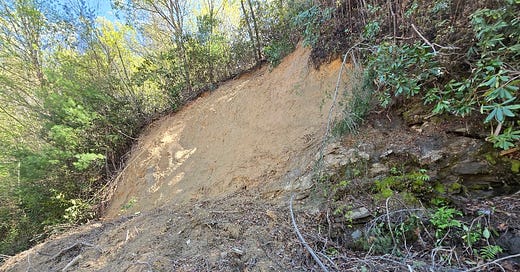



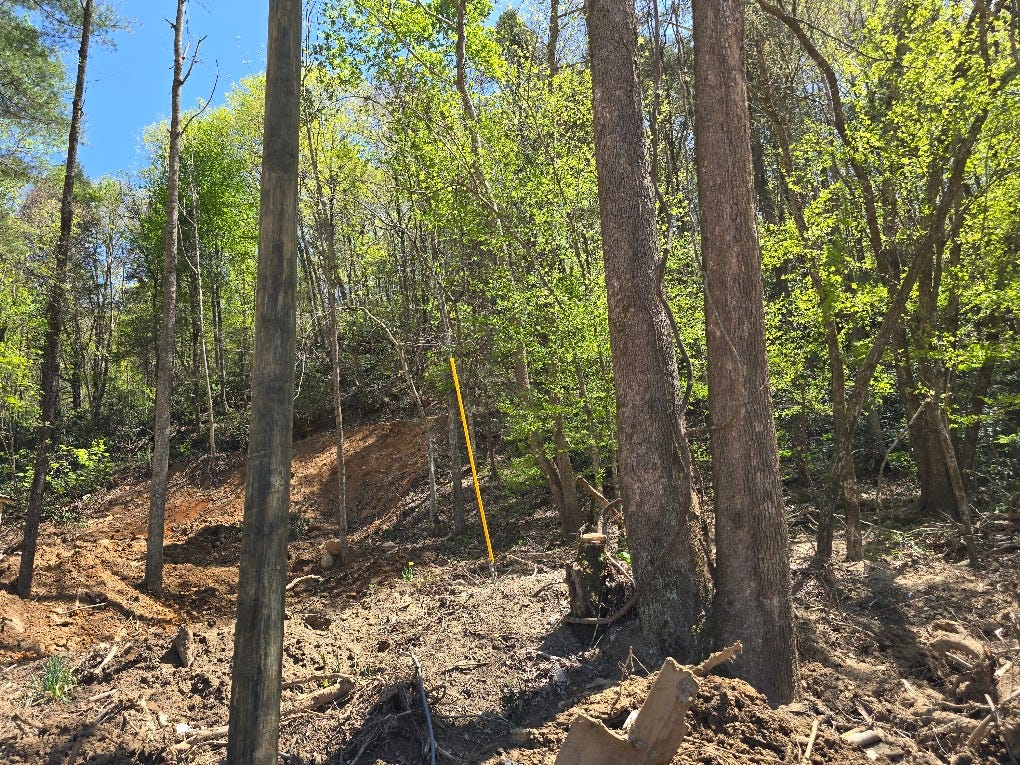
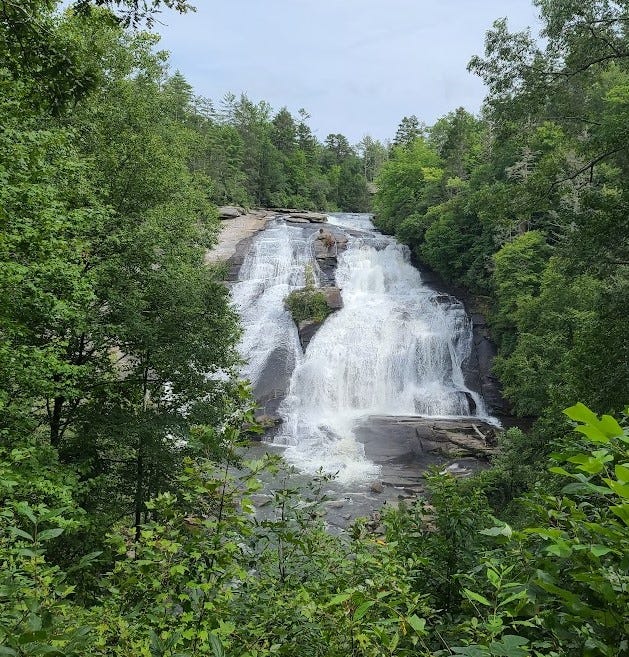
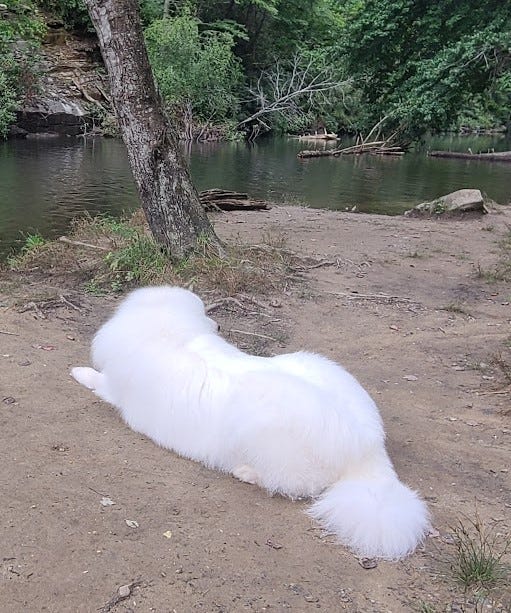

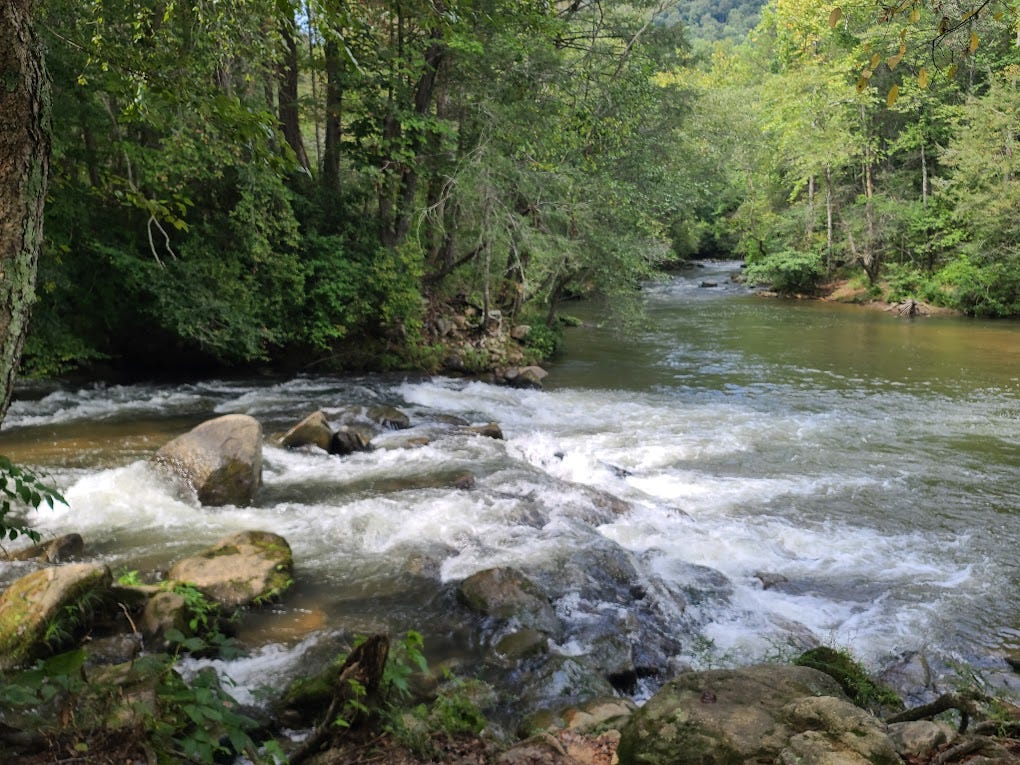
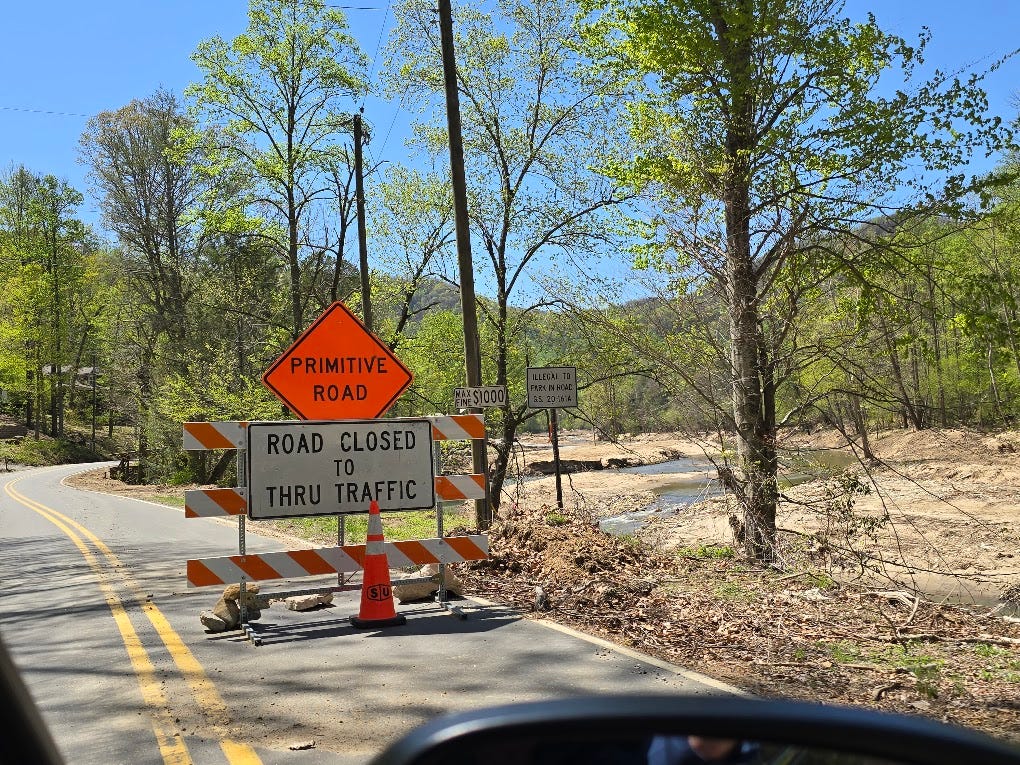

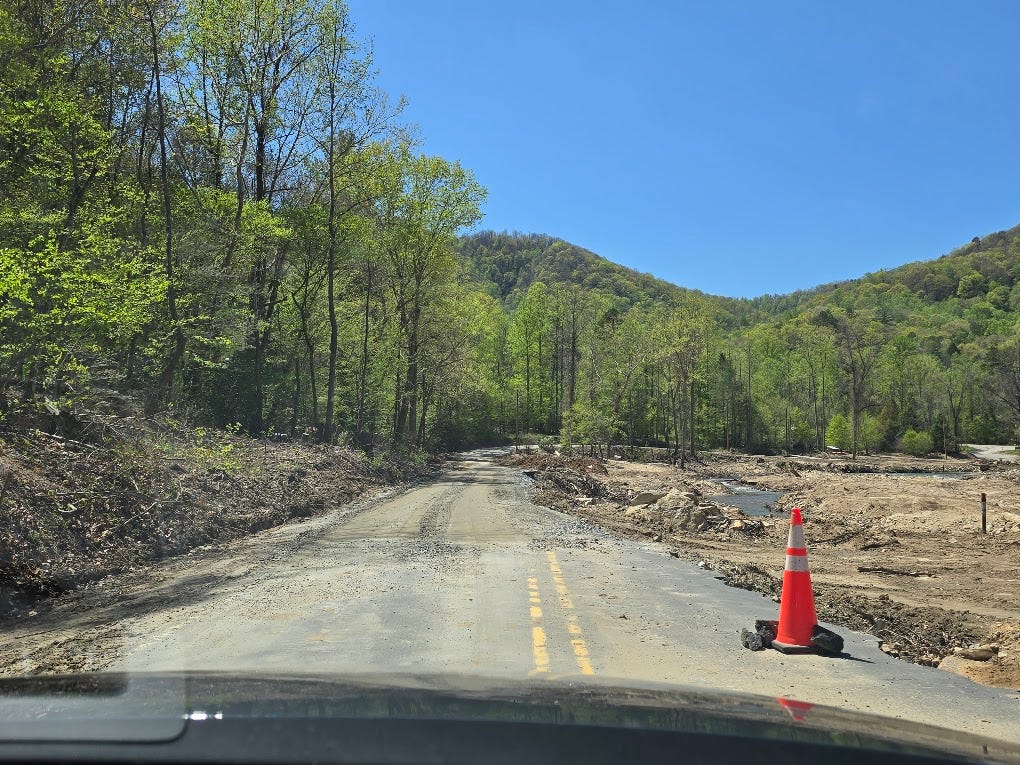
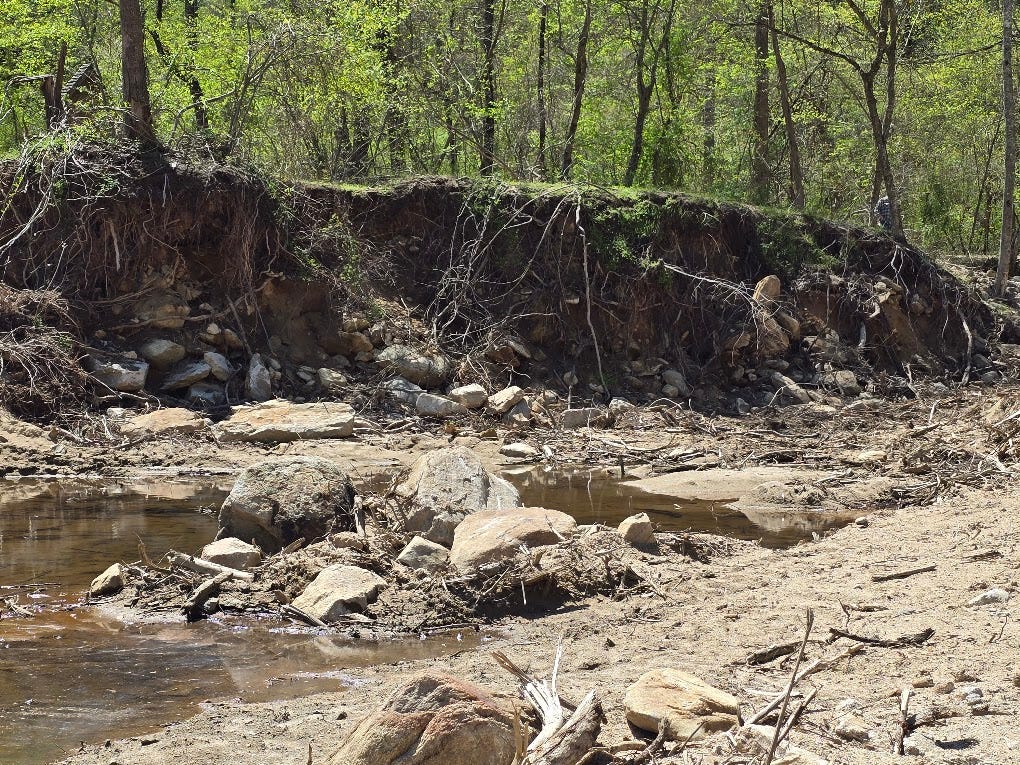
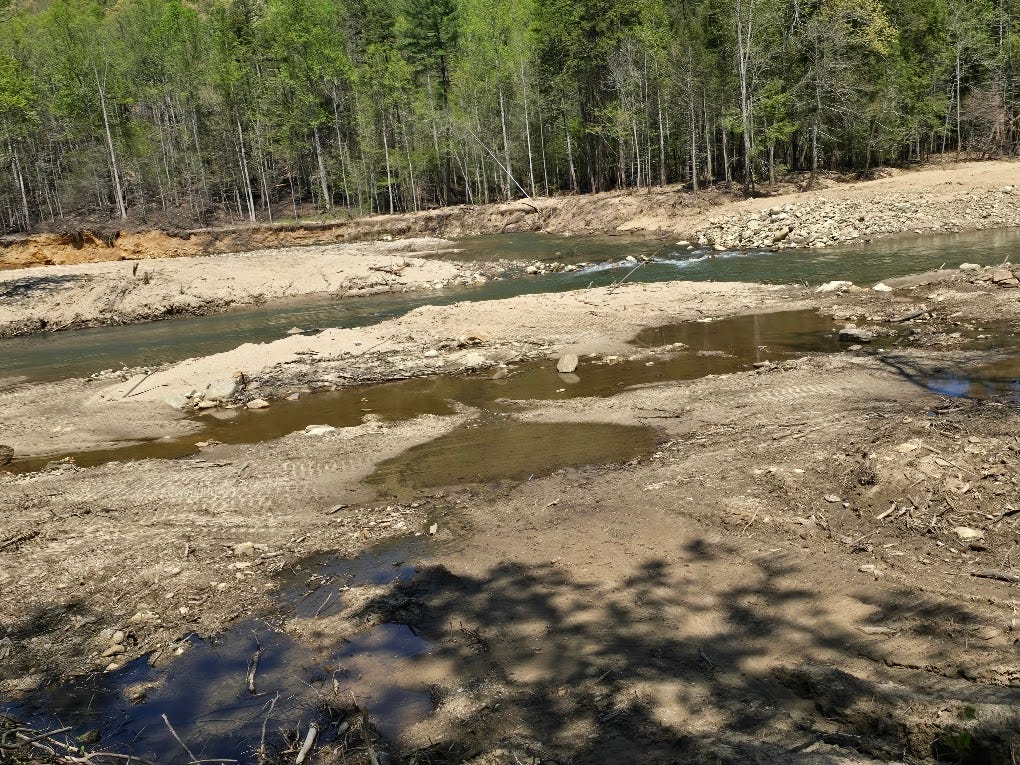
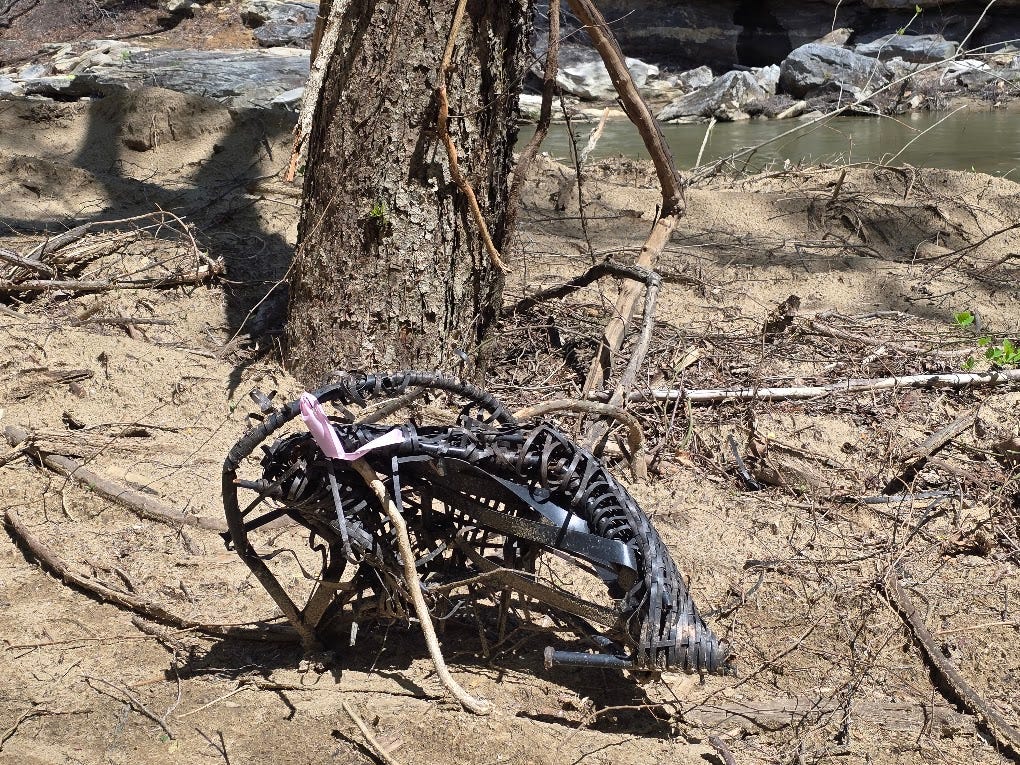
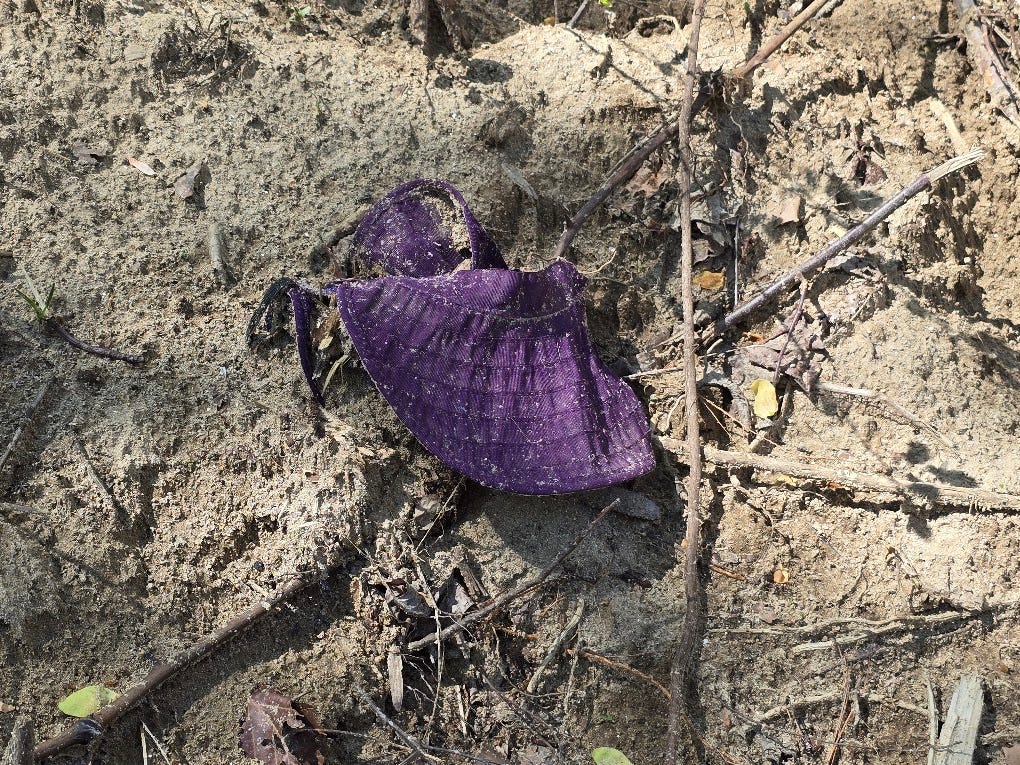
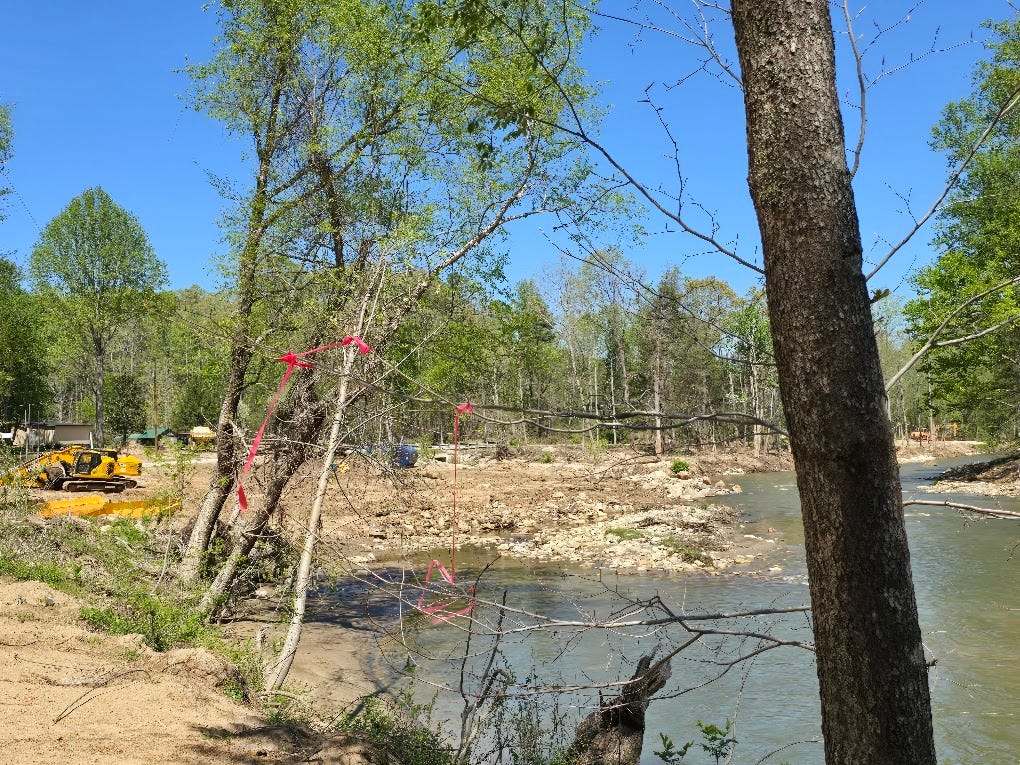
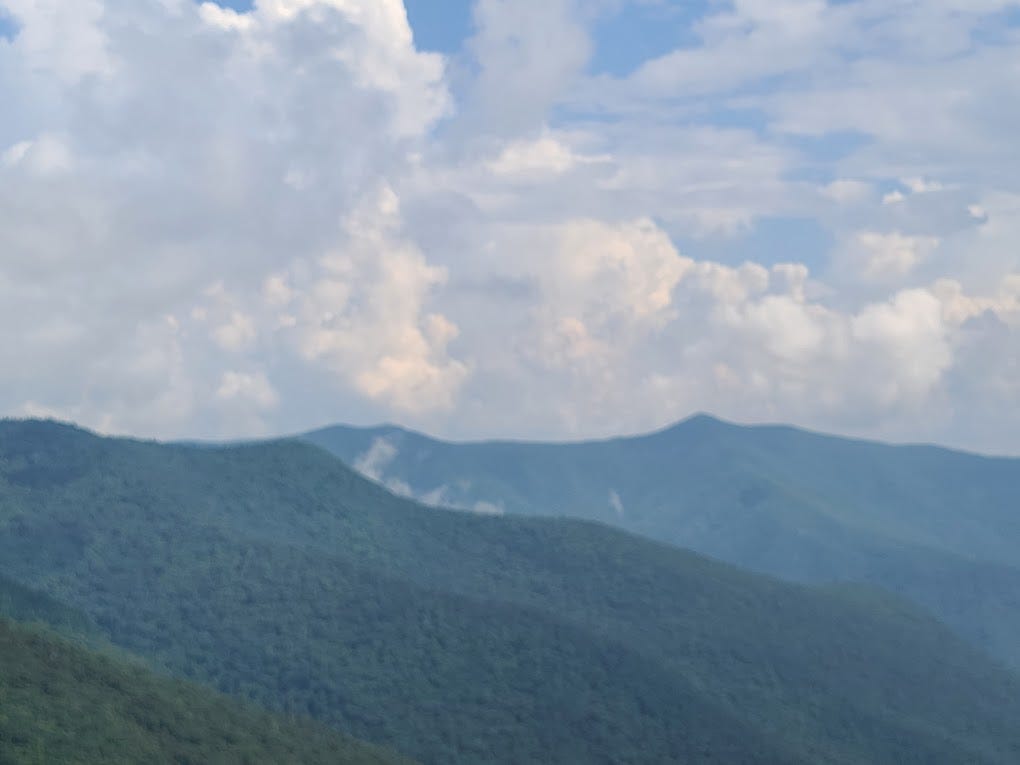
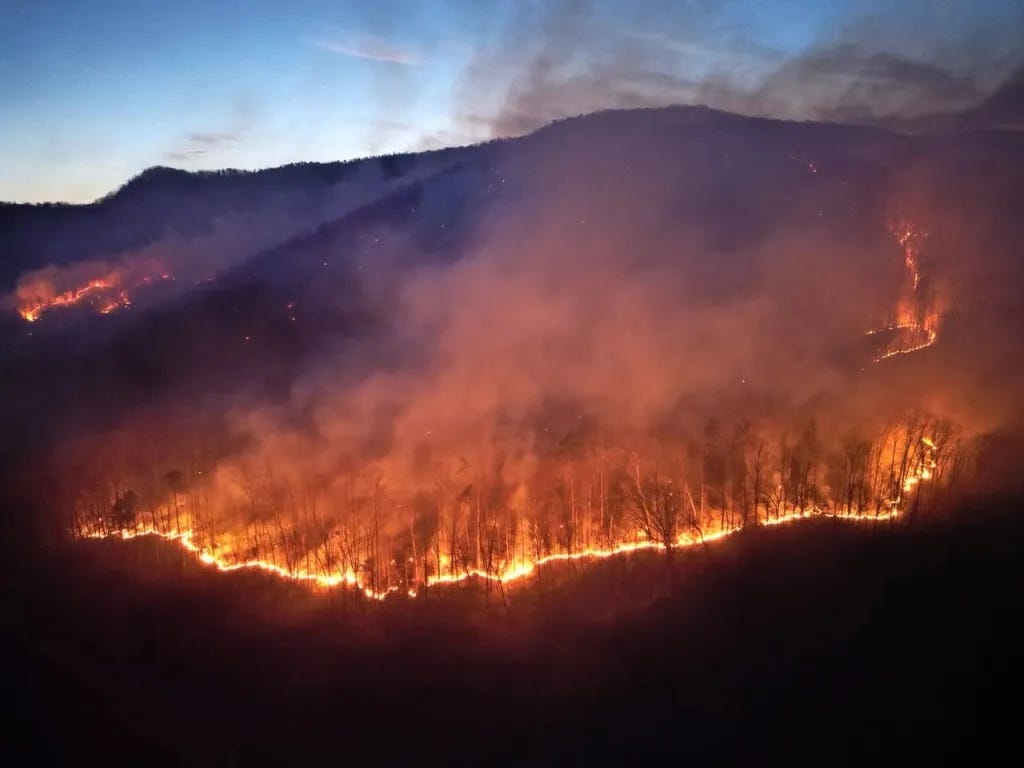
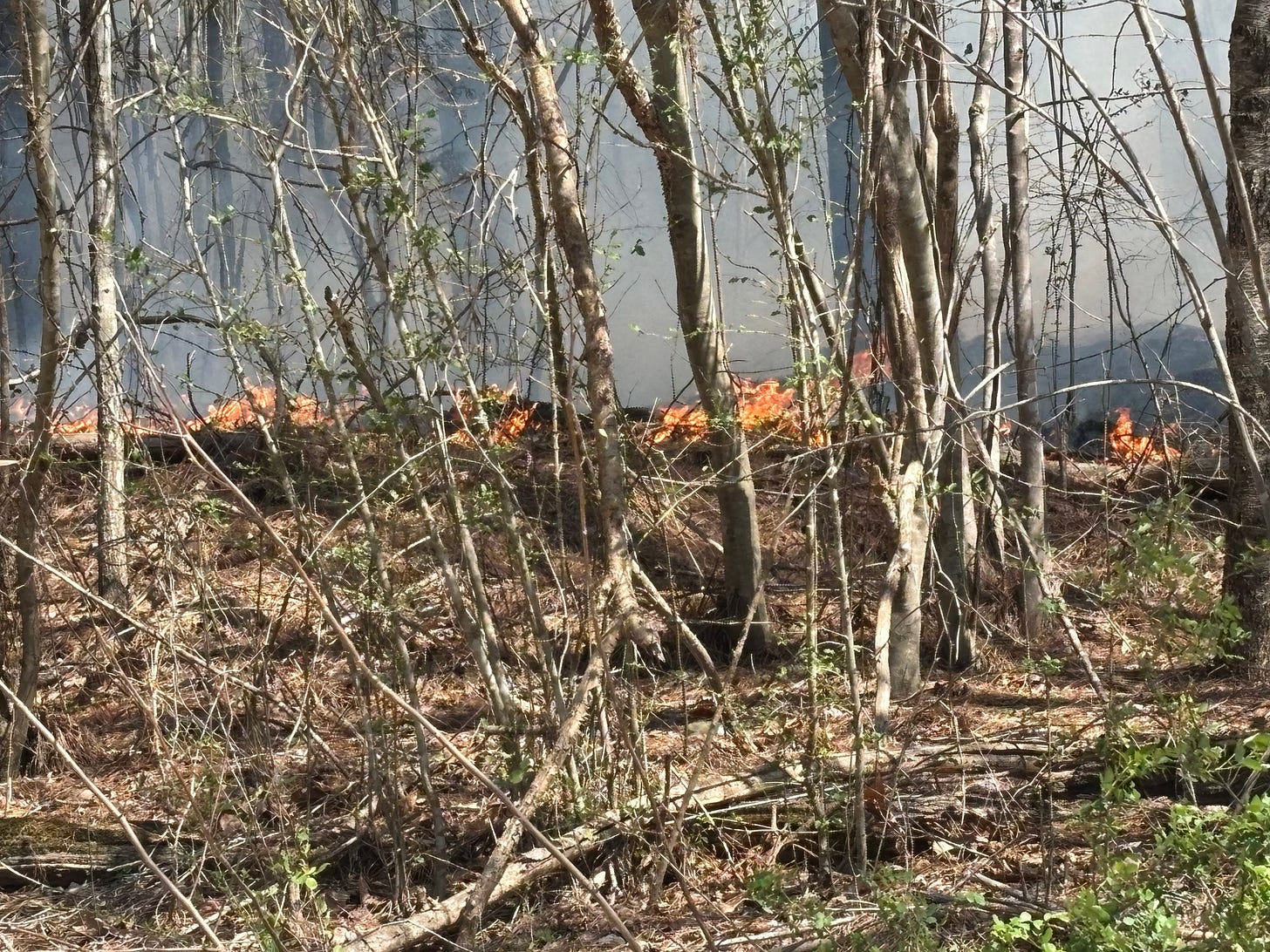
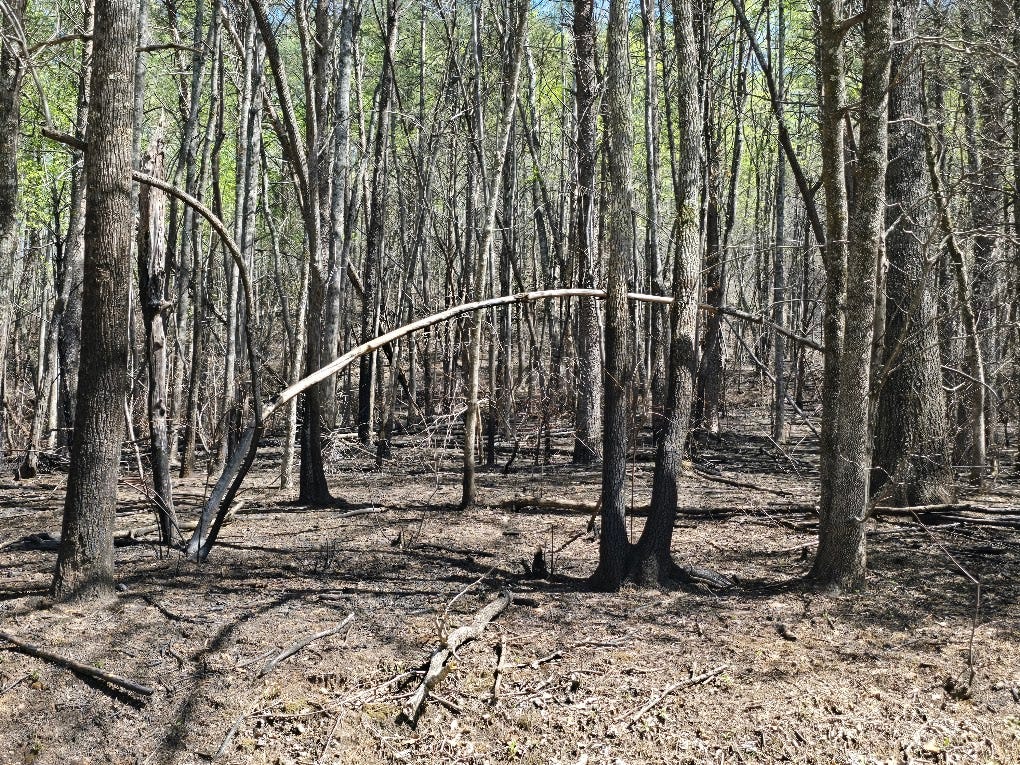
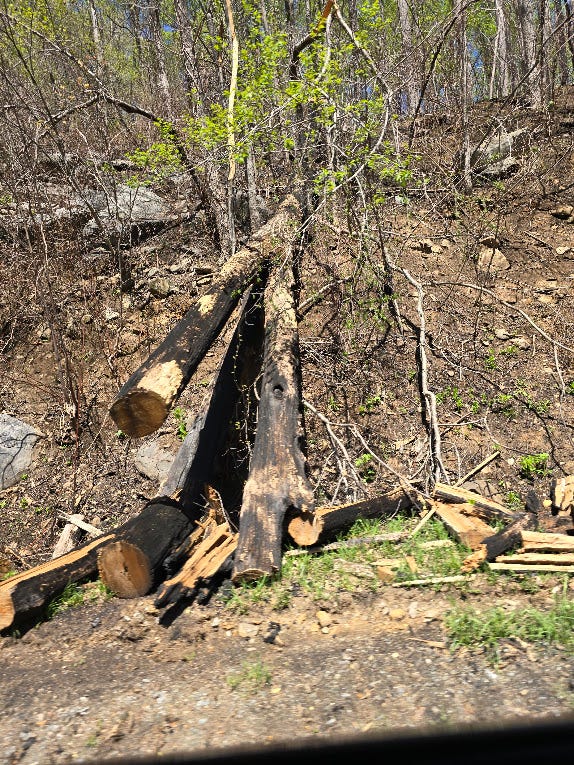
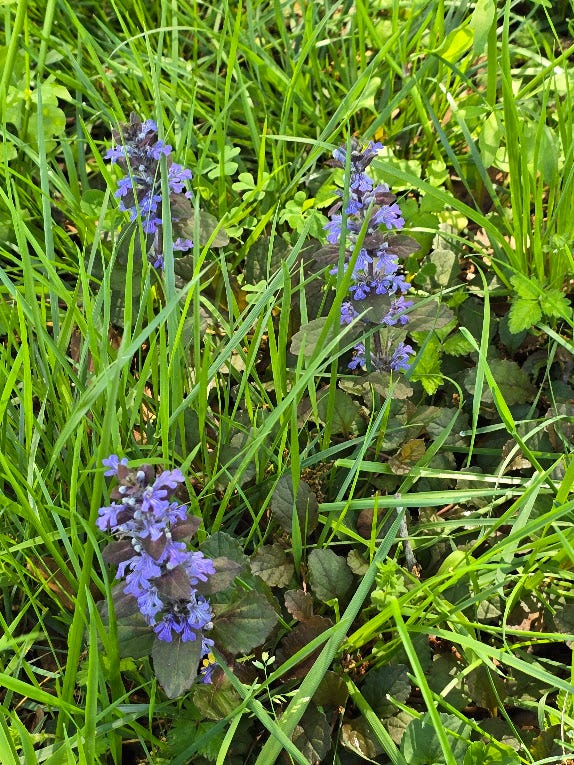
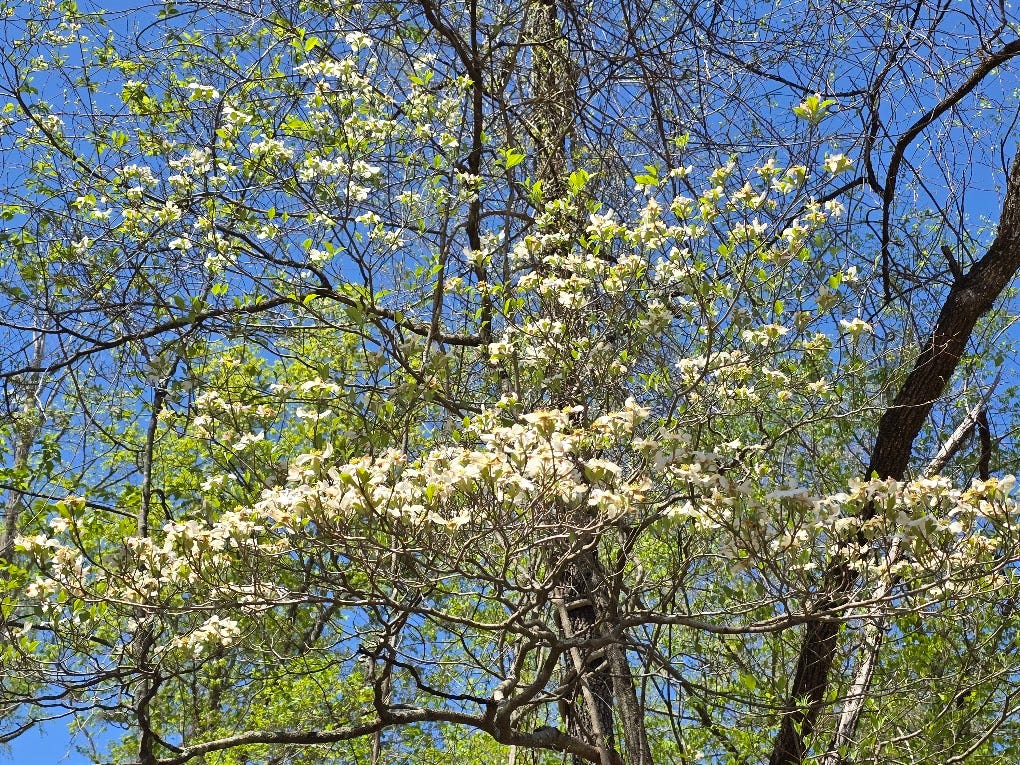

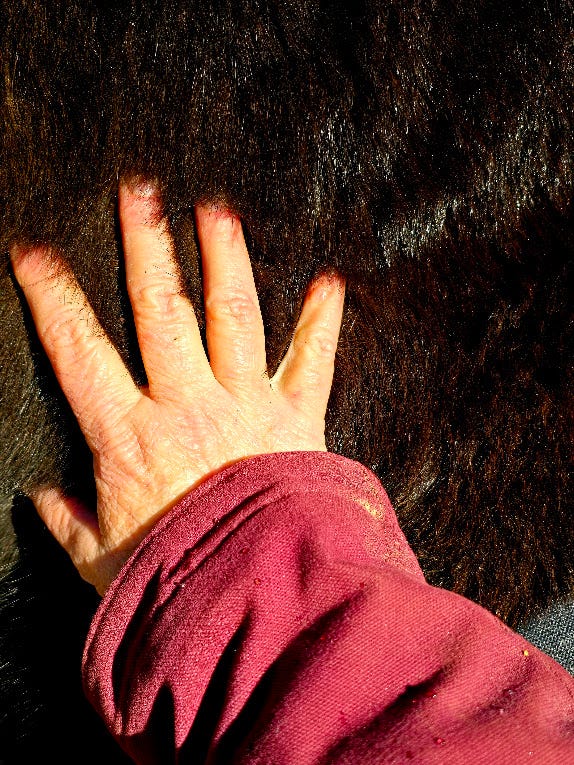
The rivers might have changed course, but our hearts remain the same, like the core of these mountains. No one else could condense this experience and give it words like you do. You are the vernal green emerging, and you’re also the haze of blue that gives us color. You are our spectrum, both visible and invisible, and I love you. Thank you for this and for everything. I couldn’t have weathered this storm without you.
From the heart and soul of you. No one can pull it all together to make us see the horror and the love. I love you my dear friend Tamar Reno.